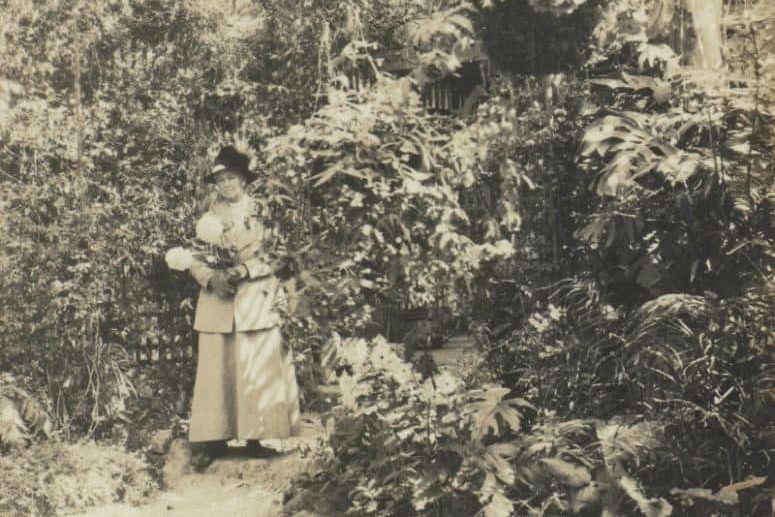
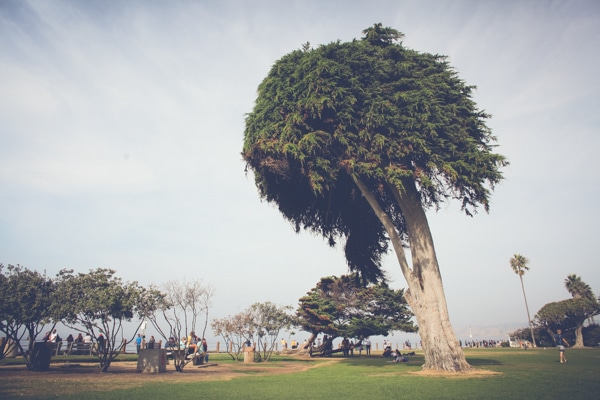

Known for its wonderful weather, sandy beaches, and laid-back-with-a-touch-of-LA culture, San Diego is a city rich in West Coast history. The city was the first site visited by European explorers in the western coastal territories of the United States — thus giving it the title of “Birthplace of California.” Exploration first began in 1542 by Spanish explorer Juan Rodriguez Cabrillo, who landed in San Diego Bay and claimed the new region for Spain. Nearly five centuries later, this city has flourished to become the 8th largest city in America and the 2nd largest in the state.
San Diego is a region full of historical sites — from the first California mission, Mission de Alcala, to the Hollywood buzz-worthy Whaley House. But aside of the high-profile historic sites, San Diego is also home to a handful of trees that are living relics of a significant or influential part of our city’s history. While some are protected in fence enclosures with nifty plaques that note their importance, some of these trees are overlooked and passed by on a daily basis without any hint of their historical magnitude. But with the help of this article, you can learn what some of San Diego’s historic trees are. So next time you drive or stroll by, you can stop for a moment to take in a piece of our city’s past.
BALBOA PARK’S MONTERREY FIG


First up on the list is perhaps the most popular tree amongst true San Diego locals. It’s a tree whose roots we remember climbing atop as little kids — before the protective fence enclosure was built. And it’s a tree that commands the attention of residents and tourists, alike, who stroll by. Say “Hello” to the iconic Moreton Bay fig tree of Balboa Park.
Nestled in between the Natural History Museum and the Spanish Village, this Moreton Bay fig tree (Ficus macrophylla) first began its cozy stay in San Diego in 1915 as a small tree in a garden. Then a century later, it has grown to over 80 feet in height and 140 feet in canopy width, with a trunk girth of 42 feet — making it not only one of the three largest of its kind in the state of California, but the tallest Moreton Bay fig in the entire continent of North America. This species, in its optimal environment, has the potential to reach a height of 200 feet and a canopy width of 180 feet. The widest Moreton Bay fig rest just north of San Diego in Santa Barbara. I guess it’s a tree that loves the Southern California weather.
The far-reaching nature and limb strength of the Moreton Bay fig makes this tree an ideal shade tree. It does best in large open areas to give its crown and roots room to spread. As a member of the ficus tree family, this tree species is notorious for destructive roots that possess a move-or-be-moved “mentality.”
Decades ago, visitors to the park were allowed full access to the tree — making it one of the park’s favorite trees to sit under or climb. However, over time, the tree’s trunk, roots, and limbs became heavily vandalized by carvings and soil compaction resulted from the heavy foot traffic. To help prevent the decline of the tree’s health, the fence enclosure was erected in 1989, allowing the tree’s natural mulch to accumulate and the soil’s nutrients to replenish — thus aiding in the tree’s rehabilitation.
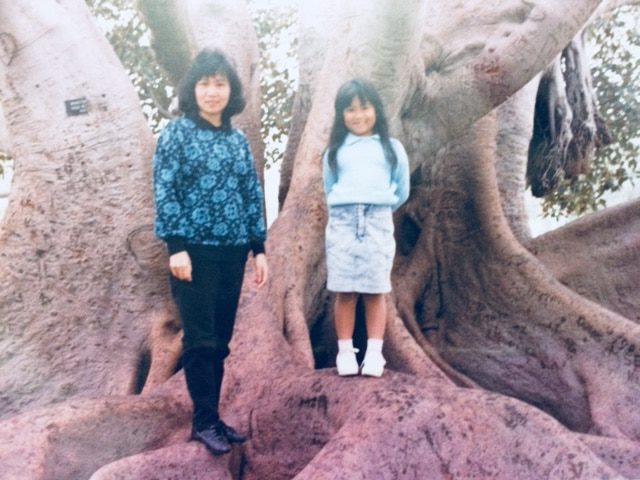
Circa 1988 before the fence enclosure was built.
THE ORIGINAL LORAX TREE
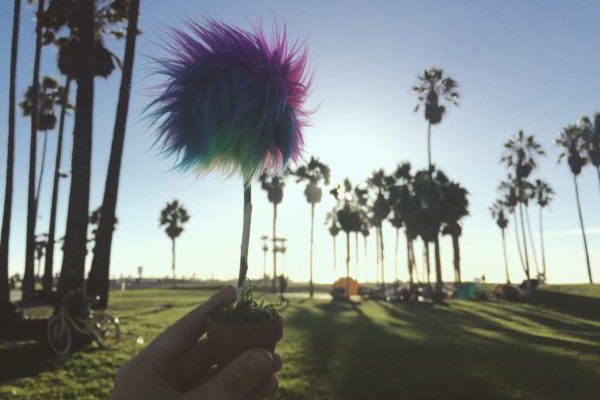
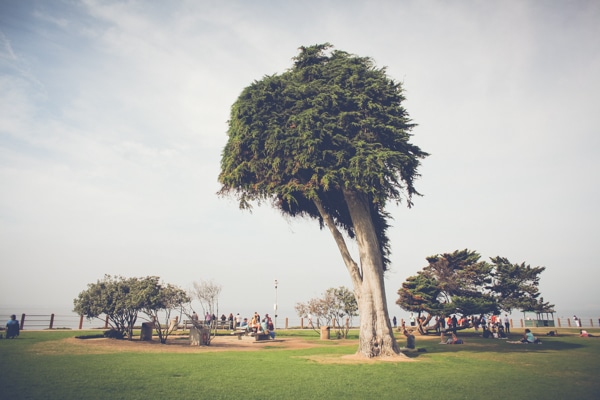
When you think of the name, Dr. Seuss, you probably think of the Cat in the Hat. When you think of Dr. Seuss and trees, what comes to mind? If you’re familiar with his books (how could you not be?), then you most likely thought of the brilliantly-creative, lollipop-shaped truffula trees — the focal point for his book, The Lorax.
Did you know that the very tree that inspired the truffula tree resides in San Diego? Born in Massachusetts, Theodor Geisel — aka Dr. Seuss — lived most of his life in the San Diego prestigious beach community of La Jolla. In his home and studio atop Mount Soledad is where this iconic author gazed out of his windows and gained inspiration for his beloved books. It is believed that an oddly-shaped tree that stands in the middle of a vast green lawn by the sea gave Dr. Seuss the epiphany he needed to conceptualize the colorful truffula tree.
This tree is actually a Monterrey cypress that is located in the middle of the Ellen Browning Scripps Park along Coast Boulevard, which is north of the Children’s Pool. There are no signs or deserving plaques that specify the infamous tree, but just look for the quirky-looking tree or ask a La Jolla local to point you in the right direction. It’s a great spot to bring a blanket and some good ol’ Dr. Seuss books to read to the kids for a literature and history lesson.

KATE SESSIONS TREE


Kate Sessions is a famed botanist who lived with a mission to beautify San Diego with trees and greenery. Whether you’re familiar with her contributions or not, it’s difficult to find a born-and-raised San Diegan who hasn’t heard her name. Celebrated as the “Mother of Balboa Park,” Sessions introduced a significant number of new plants to our city — which prior to her influence, consisted mostly of dirt and shrubs. Many of these new specimens, such as the Tipuana tipu, jacaranda, queen palm, and bird of paradise — just to name a few — are now common sights throughout San Diego as they fill our parks, line our streets, and decorate our homes and structures.
In an overlooked corner of Garnet Avenue and Pico Street humbly stands a broad Tipuana tipu tree. It’s a tree that drivers entering PB from the northern entrance typically drive right past without blinking an eye — yet it’s tree that plays such a memorable part in San Diego’s green history. The tree was planted by Sessions at her Pacific Beach nursery site, which she started in 1928. Today, it is all that remains from that nursery, along with a plaque that commemorates the significance of the area. Sessions’ other nursery locations included Mission Hills, Coronado, and most famously — her leased land in Balboa Park.
It was Kate Sessions’ work in Balboa Park that changed the projection of the area. At the time, the area was called City Park, and Sessions was given 32 acres of land for her private nursery. In exchange, she agreed to plant more than 100 trees a year in the park and 300 throughout the city — thus bringing more green life to an otherwise brown city, and transforming the entire once-blandish look of Balboa Park into the lush, bountifully landscaped hub that it is today.
CALIFORNIA’S OLDEST PEPPER TREE
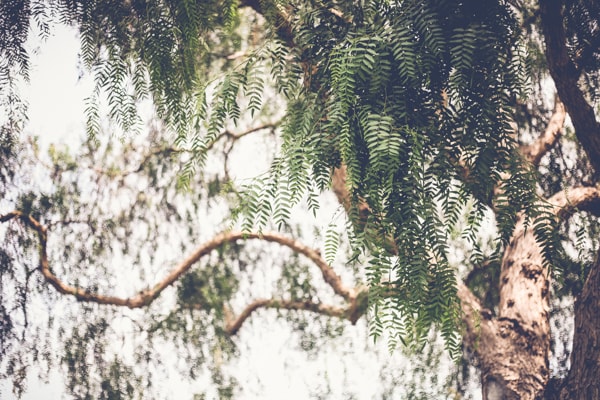
The California pepper tree is one of the most common trees in San Diego. With its dangling foliage that resembles the South’s iconic weeping willow tree, the pepper tree is ideal for California terrain with its low-watering needs. Originating from South America, the species made its way to California in 1830 when a Peruvian sailor stayed as a guest at the Mission San Luis Rey. To thank the missionaries, he presented them with a handful of seeds, which were planted by Friar Antonio Peyri in the Mission’s garden. One of those seeds quickly sprouted into a beautiful, lush tree that provided shade for the Mission’s courtyard — where almost 200 years later, it still continues to do so.
When visitors of the Mission first gaze upon this historic tree, one of the first observations is that it’s quite odd-looking. Through the years, the tree accumulated a vast collection of burl — deformed wood-grain growth — that was the result of some kind of stress. Burl typically is found in the lower portion of the trunk, but with this “old-timer,” almost its entire core structure is draped in masses of bulging wood. While it may be malformed, it’s these mesmerizing deformities that show that this historic tree has been through a lot in its life.
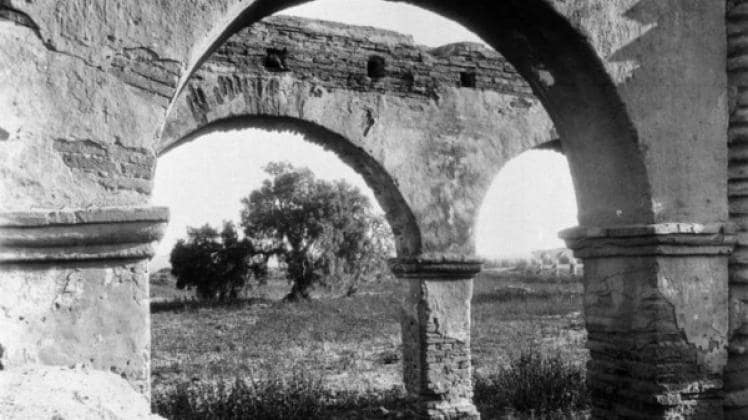
Pepper tree seen through the ruined arches of Mission San Luis Rey de Francia, 1900.
Courtesy of the USC Libraries – California Historical Society Collection, 1860-1960.
IN NEED OF TREE TRIMMING OR REMOVAL HELP IN THE SAN DIEGO REGION?
CONTACT US TODAY TO SPEAK WITH A FRIENDLY TREE PROFESSIONAL.
619.677.5777


